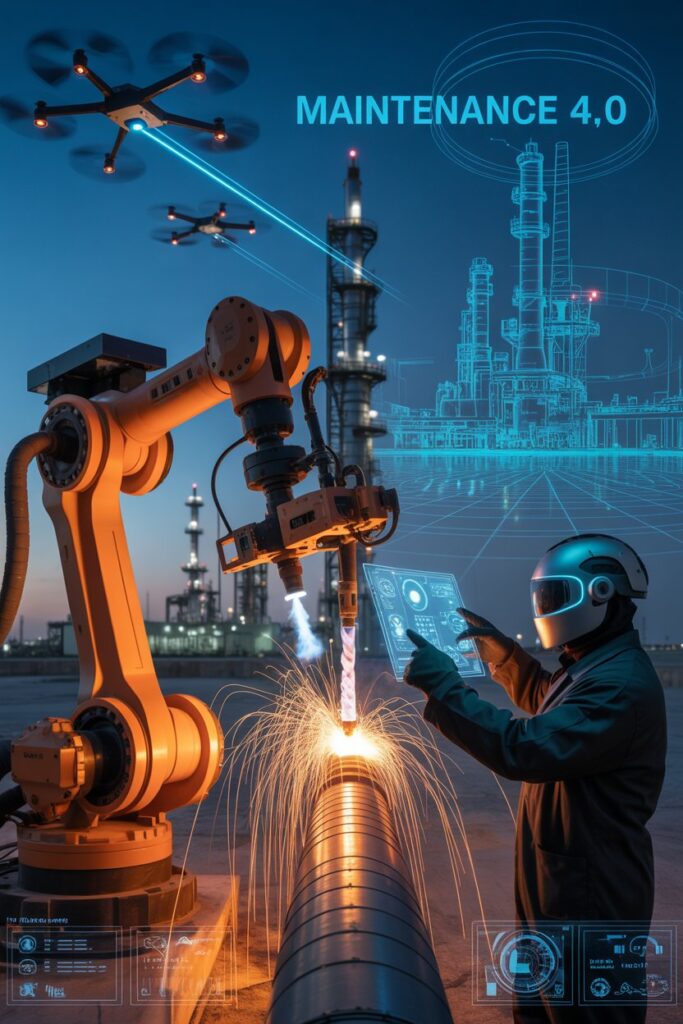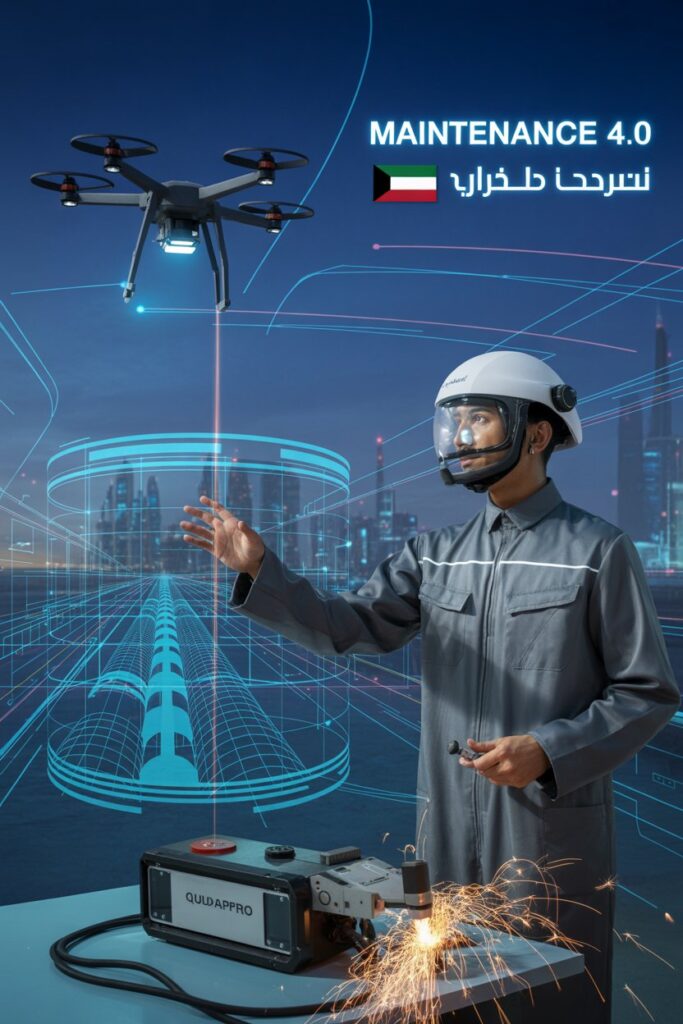
ntroduction
Maintenance 4.0 is transforming how industries manage equipment and infrastructure. By integrating AI, IoT, and automation, businesses in Kuwait are shifting from traditional repair methods to smart, predictive maintenance.
Kuwait is rapidly adopting these technologies as part of Vision 2035, aiming for a digitally advanced economy. The benefits are clear: greater efficiency, lower costs, and sustainable operations. From oil fields to smart cities, Maintenance 4.0 is reshaping Kuwait’s industrial landscape.
The Rise of Smart Maintenance in Kuwait
Gone are the days of waiting for machines to break down before fixing them. Maintenance has evolved from reactive to predictive, and now to smart, automated systems.
Under Kuwait Vision 2035, the government is pushing for digital transformation in infrastructure. Key sectors leading this change include:
- Oil & Gas – AI-powered monitoring in refineries.
- Construction – Smart sensors in buildings for real-time upkeep.
- Healthcare – Automated maintenance of medical equipment.
- Smart Cities – IoT-enabled utilities in projects like Silk City and NEOM.
Core Technologies Powering Maintenance 4.0
Several cutting-edge technologies are making maintenance smarter in Kuwait:
AI & Machine Learning
Predictive analytics help detect equipment failures before they happen, reducing costly downtime.
IoT & Smart Sensors
Real-time data from sensors allows instant adjustments, keeping systems running smoothly.
Robotics & Drones
Drones inspect hard-to-reach areas like oil rigs and tall buildings, improving safety and speed.
Digital Twins
Virtual models of physical assets simulate maintenance needs, optimizing performance.
Why Kuwait Needs Smart Maintenance
The advantages for Kuwait’s industries are undeniable:
- Faster Repairs – Less downtime means higher productivity.
- Cost Savings – Fewer emergency fixes and reduced labor costs.
- Eco-Friendly Operations – Energy-efficient systems cut waste.
- Safer Work Environments – Fewer workers exposed to hazardous conditions.

Success Stories from Kuwait
Several Kuwaiti companies are already seeing results:
- Kuwait Oil Company (KOC) uses AI to predict machinery failures, saving millions.
- Smart City projects integrate IoT for automated utility management.
- Kuwait International Airport employs drones for runway inspections, speeding up safety checks.
Challenges and How Kuwait Can Overcome Them
While smart maintenance offers huge benefits, there are hurdles:
- High Setup Costs – The long-term savings justify the investment.
- Training Workers – Upskilling programs prepare employees for tech-driven roles.
- Cybersecurity Risks – Stronger encryption protects IoT and AI systems from threats.
The Future of Maintenance in Kuwait
By 2030, Kuwait could see fully autonomous maintenance systems. With 5G and blockchain, operations will become even smarter. Government initiatives and private sector partnerships will drive this innovation forward.
AQs About Smart Maintenance in Kuwait
What is Maintenance 4.0?
Maintenance 4.0 refers to the use of AI, IoT, robotics, and automation to predict and prevent equipment failures before they happen. In Kuwait, industries like oil & gas, construction, and smart cities are adopting it for higher efficiency and cost savings.
Why is Kuwait investing in smart maintenance?
Under Kuwait Vision 2035, the country aims to modernize its infrastructure and reduce reliance on manual labor. Smart maintenance helps cut downtime, improve safety, and boost sustainability—key goals for Kuwait’s economy.
Which industries in Kuwait use Maintenance 4.0?
- Oil & Gas: AI predicts refinery equipment failures (e.g., Kuwait Oil Company).
- Construction: Smart sensors monitor building health in projects like Silk City.
- Aviation: Drones inspect airport runways (Kuwait International Airport).
- Healthcare: Automated systems maintain critical medical devices.
What are the benefits of smart maintenance for businesses in Kuwait?
- Lower costs (fewer emergency repairs, reduced labor).
- Faster response times (real-time IoT alerts).
- Longer equipment life (predictive analytics prevent breakdowns).
- Safer workplaces (drones/robots handle risky inspections).
What technologies power Maintenance 4.0 in Kuwait?
- AI & Machine Learning (predicts failures).
- IoT Sensors (live monitoring of machines).
- Drones & Robotics (automate inspections).
- Digital Twins (virtual models for testing).
Are there challenges to adopting smart maintenance in Kuwait?
Yes, but they’re solvable:
- High initial costs (offset by long-term savings).
- Workforce training (Kuwait is upskilling engineers in AI/IoT).
- Cybersecurity (stronger encryption protects IoT systems).
What’s next for smart maintenance in Kuwait?
By 2030, expect:
- Fully autonomous repairs (no human intervention).
- 5G + Blockchain for ultra-fast, secure operations.
- More govt-private projects (e.g., NEOM-inspired smart cities).
How can my business in Kuwait start using Maintenance 4.0?
Begin with:
- IoT sensors for basic equipment monitoring.
- AI-powered analytics tools (like those used by KOC).
- Partnerships with Kuwaiti tech providers for tailored solutions.
Conclusion
Kuwait is on the brink of a maintenance revolution. Embracing AI, IoT, and automation will make industries smarter, faster, and unstoppable. The time to act is now—businesses that adopt Maintenance 4.0 today will lead tomorrow’s economy.
Is your company ready for the future of maintenance?


